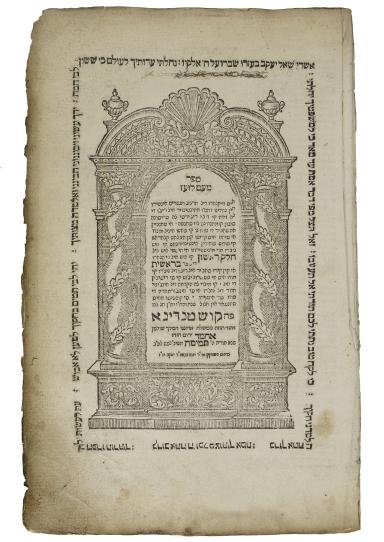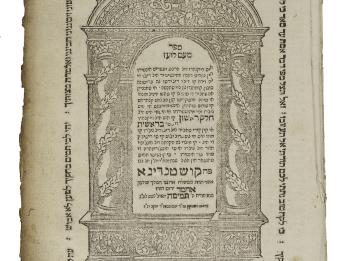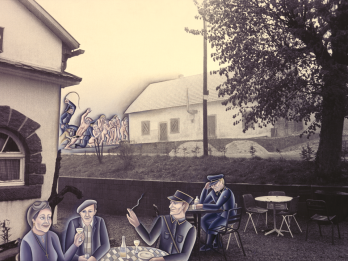Me‘am lo‘ez (From a People of Foreign Tongue): On Genesis
Jacob Huli
1730
The Book of Me‘am lo‘ez is the explication of the entire Hebrew Bible in Ladino, explaining the way of life which a person must lead as the sacred law commanded, and also to know about all that happened in the world, and that it be written with clear words so that all may understand it, and it is a very necessary book. [ . . . ]
Moses received the law at Mount Sinai in [the year] 2448 of the Creation; and that there are 613 commandments which we shall inform about, each one in its place. [ . . . ] And all the people of that generation knew and were informed for certain that the Holy One blessed be He informed Moses of the meaning of each one of the commandments of the law, with all its points that are required for the commandment, and this is called the Oral Law—which is the explication of the law, and for this reason Moses remained on the mountain for forty days and forty nights, as the verse says in the Torah portion of Mishpatim, for if it were not more than to receive the two tablets, this could be done in one hour, but the truth is that, in those days, the Holy One blessed be He taught Moses all the meaning of the law, seeing that the words of the [Written] Law are sealed and brief, so that it is not possible to understand any verse without knowing the Oral Law, since the Law commands us saying: And he made tzitzit for them (Numbers 15:38) and does not say how they were made and how many threads ands knots were required, and it also tells us: And thou shalt bind them for a sign upon thine hand, and they shall be as frontlets between thine eyes. And thou shalt write them upon the posts of thy house (Deuteronomy 6:8–9), a verse which we say every day in the Shema‘ but do not understand a single word; and in what manner the tefillin [phylacteries] and the mezuzah [parchment scroll on the doorpost] are written and where the mezuzah is placed, whether it should be on the right side or on the left. And it says: It is a day of blowing the trumpets unto you (Numbers 29:1) and does not clarify with which object we should blow on the day of Rosh Hashanah [the New Year]—whether it should be with a horn or with a trumpet, and one doesn’t know the meaning of the word teru‘ah [blowing] or how many times one is obligated to blow. And the verse says: you shall slaughter and eat meat (Deuteronomy 12:15), and it does not state in which way to slaughter it and with which kind of knife, and the rest of the dinim [laws] of sheḥita [ritual slaughter] and bedika [examining the carcass] are many. And the verse further says: and you shall sit in booths for seven days (Leviticus 23:42) and we do not know which walls will be needed and what material we must cover the sukkah [booth] with, and what is a sukkah kesherah [kosher booth] and what is a sukkah pesulah [invalid booth], and the same applies to all the mitzvot [commandments] of the law, which were written in brief and with signs in the Torah because the Holy One blessed be He did not wish to write it all clearly for reasons which He knows, and the Holy One blessed be He instructed Moses that the Written Law cannot be said by heart, for if someone wished to adorn some parashah [passage] by himself, he would not be authorized to do so, and that which is Oral Law, they are not allowed to write, but they must learn them by heart and learn [lit. receive] them one from another. This manner of explanation of the mitzvot is called the Laws of Moses from Mount Sinai.
Credits
Published in: The Posen Library of Jewish Culture and Civilization, vol. 5.






